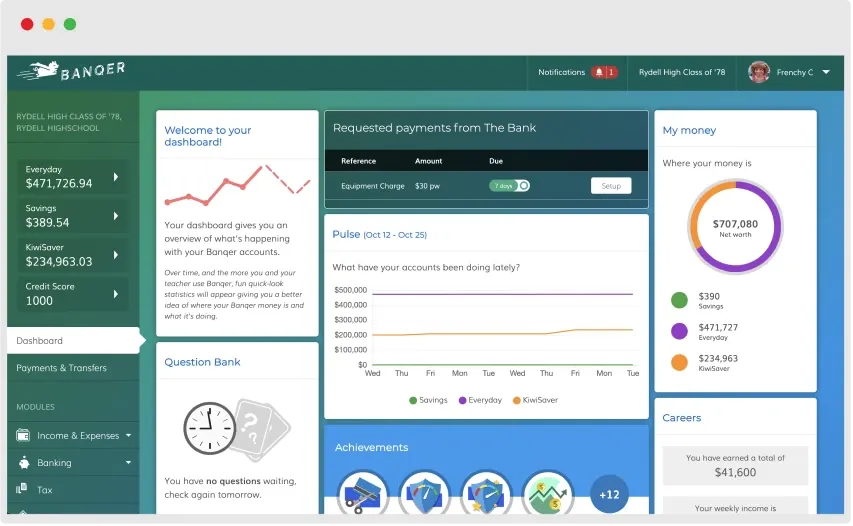Classroom jobs sound like a great idea… until you’re the one managing the roster, reminding students who’s meant to be doing what, and picking up the slack when they forget. But what if I told you classroom jobs can actually lighten your load and help students learn responsibility - without becoming another admin nightmare?
In upper primary, kids are at the perfect age to start owning tasks. They want to feel important, they love structure, and they get a kick out of feeling like they’re trusted. The trick is setting up jobs that run themselves once you get the system going.
The Jobs That Actually Help (and Kids Enjoy)
You don’t need a massive list. A small, well-thought-out rotation of roles is way more sustainable than trying to give everyone a job all the time.
Here are some of my favourites:
1. Tech Captain
Perfect for your fast-fingered students. They:
- Log in and set up the class devices
- Troubleshoot basic tech issues (printer jam, anyone?)
- Help classmates upload work or navigate learning platforms
- Ensure devices are put back on charge at the end of the lesson
2. Admin Assistant
You’ll be shocked at how much they can take off your plate. They:
- Hand out and collect worksheets
- Keep track of permission slips
- Help file books or supplies

3. Messenger or Runner
Great for energetic kids who need a purposeful walk. They:
- Take notes to the office or other teachers
- Deliver borrowed items back to classrooms
- Escort students as needed
4. Librarian
Give your reading corner some love. They:
- Tidy shelves
- Recommend books to peers
- Run mini reading challenges or displays
5. Eco Warrior
Because someone needs to care for the plants and recycling. They:
- Water class plants
- Sort paper scraps or compost
- Remind others about lights and waste
- Check on classroom pets
6. Vibe Manager (yes, this is a thing!)
This student keeps an eye on the “feel” of the room. They:
- Choose calming music when working
- Lead brain breaks or mindfulness minutes
- Suggest class shout-outs for positive behaviour
Mix it up depending on what your class needs - some roles might not be relevant every term, and that’s okay. If you are having trouble when it comes time to select the right student for the right job, ask the kids. Running a classroom vote in a democratic way opens up the opportunity to create a new civics lesson or unit.
Rewards Without the Overload
Let’s talk pay. You can go full classroom economy with printed dollars and auctions (which could be more work), or you can keep it super simple. Either way, the key is consistency without extra work for you.
Monetary Rewards (Real or Digital)
- Give each job a weekly “salary”
- Students can use this to “buy” things like:
- Free time
- Stationery
- Homework passes
- Classroom currency auctions
You can track earnings using Banqer, a brilliant online financial literacy tool that doubles as a classroom economy. Students get a digital bank account, and you can automate their pay based on job roles. It also introduces saving, spending, and budgeting - hello real-life learning!

Other teachers use ClassDojo points as a currency (just rename them to “class cash” or similar).
Non-Monetary Rewards
Sometimes, students don’t need stuff - they just want recognition. Try:
- Certificates or job badges
- VIP seating for the week
- Leadership points towards a termly award
- Class-wide shout-outs during circle time
- A note home to parents saying “Your child rocked their job this week!”
You can even crowdsource ideas from your students. They often come up with rewards that are way more motivating than anything we think of.
Keep the System Simple
You do not have to reinvent the wheel every week. Here’s how to keep your classroom jobs from becoming another to-do:
- Use a visual display - A job board or digital slideshow works wonders
- Stick to weekly rotations - Avoid daily changes unless you love chaos
- Let students train each other - The outgoing Tech Captain teaches the new one
- Build in reflection - Friday check-ins where students reflect on how their job went (you’ll be amazed at the accountability they show)
And if someone forgets their job? Don’t stress. The point is teaching responsibility, not perfection.
Wrapping Up
Classroom jobs are one of those low-key strategies that can completely change your room’s vibe. Done well, they:
- Build student ownership
- Reduce your workload
- Teach real-world skills (especially with tools like Banqer)
- Create a positive, respectful class culture
And the best part? They make your students feel like valued members of a team, not just kids sitting in chairs.
So go ahead. Pick a few roles that would actually help you out. Or, you could just start with one job and allow the students to seek you out and create new job roles. Let your students take the wheel. You might just find you’ve got a mini office of capable helpers, and a whole lot more time to do what you actually love: teaching.

